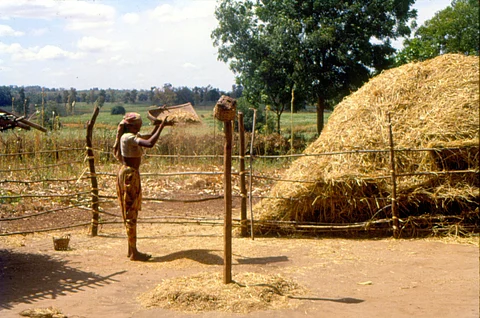

India has experienced a dry winter season (January-February) in 2025, with 89 per cent of districts suffering from deficient, large deficient, or no rainfall, according to data from the India Meteorological Department (IMD).
Despite a higher-than-normal number of western disturbances (WD), their impact on rainfall was minimal, the IMD stated in its climate summary for January. The country recorded a 71 per cent rainfall deficit as of February 10, with January marking the fifth-lowest rainfall since 1901 and the third-lowest since 2001.
More than half (51 per cent) of India’s districts received no rainfall at all, while 31 per cent recorded large deficient rainfall (between 60 and 99 per cent below normal) between January 1 and February 10. Another seven per cent experienced deficient rainfall (between 21 and 59 per cent below normal). Five states — Telangana, Chhattisgarh, Gujarat, Odisha and Mizoram—received no rainfall during this period.
Maharashtra was particularly affected, with 35 out of its 36 districts recording no rainfall and one district classified as having large deficient rainfall. Gujarat, a major Rabi crop-producing state, also faced significant deficits.
The situation in other major Rabi crop-producing states, such as Bihar, was no better, with 32 out of 38 districts receiving no rain and the remaining districts experiencing significant rainfall deficits. Similarly, Uttar Pradesh saw 21 districts with no rain and 44 districts with large deficits out of a total of 75.
Mountainous fruit-producing regions such as Uttarakhand, Himachal Pradesh and the Union Territory of Jammu and Kashmir also suffered from a dry winter season. All districts in Jammu and Kashmir and Uttarakhand reported rainfall levels between 60 and 99 per cent below normal. In Himachal Pradesh, 11 out of 12 districts experienced large deficient rainfall.
Madhya Pradesh also bore the brunt of the dry spell, with 50 out of its 52 districts receiving no or large deficient rainfall. Surprisingly, the dry state of Rajasthan fared slightly better than other Rabi-producing states, with eight districts reporting no rainfall and another eight facing large deficits. However, four districts recorded large excess rainfall (more than 60 per cent above normal), two saw excess rainfall (21 to 59 per cent above normal) and six received normal rainfall.
The North East Monsoon (NEM), which primarily brings rainfall to Tamil Nadu and parts of southern India, ended on January 27, according to the IMD. While the NEM performed well in Tamil Nadu and Rayalaseema in January 2025, recording large excess rainfall, it was less effective in Kerala and south interior Karnataka, which faced rainfall deficits. Kerala is also already experiencing extreme heat despite summer being months away officially.
Coastal Andhra Pradesh recorded large deficient rainfall as well.
Winter rainfall in north and central India is almost exclusively driven by WDs — extratropical storms that travel from the Mediterranean, carrying moisture across Iran, Afghanistan, and Pakistan before reaching India. In January, seven WDs moved across India’s extreme northern regions, exceeding the usual 5-6 disturbances expected for the month. Four of these occurred in succession between January 16 and January 23.
“Most of these WDs lacked sufficient moisture incursion and, hence, did not cause any significant rain or snow,” the IMD said in its climate summary for January.
“The WD formed during January 9-13 was the only active one, which moved from Iran to Punjab across central Pakistan and neighbourhoods at the middle and upper tropospheric levels and caused a wet spell over northwest and adjoining central India including over Delhi during January10-13,” the weather agency added.